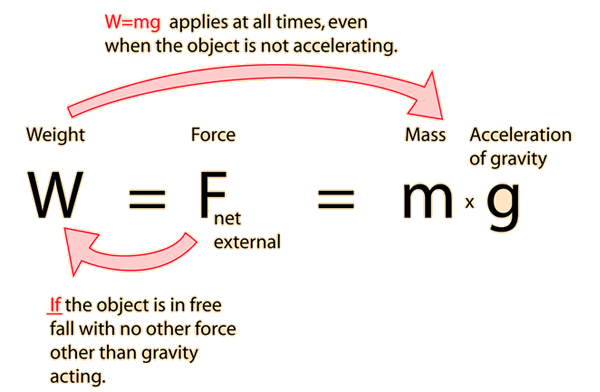MASS
The mass of an object is a fundamental property of the object; a numerical measure of its inertia; a fundamental measure of the amount of matter in the object. Definitions of mass often seem circular because it is such a fundamental quantity that it is hard to define in terms of something else. All mechanical quantities can be defined in terms of mass, length, and time. The usual symbol for mass is m and its SI unit is the kilogram. While the mass is normally considered to be an unchanging property of an object, at speeds approaching the speed of light one must consider the increase in the relativistic mass.
The weight of an object is the force of gravity on the object and may be defined as the mass times the acceleration of gravity, w = mg. Since the weight is a force, its SI unit is the newton. Density is mass/volume.

WEIGHT
The weight of an object is defined as the force of gravity on the object and may be calculated as the mass times the acceleration of gravity, w = mg. Since the weight is a force, its SI unit is the newton.For an object in free fall, so that gravity is the only force acting on it, then the expression for weight follows from Newton's second law.

You might well ask, as many do, "Why do you multiply the mass times the freefall acceleration of gravity when the mass is sitting at rest on the table?". The value of g allows you to determine the net gravity force if it were in freefall, and that net gravity force is the weight. Another approach is to consider "g" to be the measure of the intensity of the gravity field in Newtons/kg at your location. You can view the weight as a measure of the mass in kg times the intensity of the gravity field, 9.8 Newtons/kg under standard conditions.
Data can be entered into any of the boxes below. Then click outside the box to update the other quantities.

At the Earth's surface, where g=9.8 m/s2 :

Data can be entered into any of the boxes below. Then click outside the box to update the other quantities.

No comments:
Post a Comment